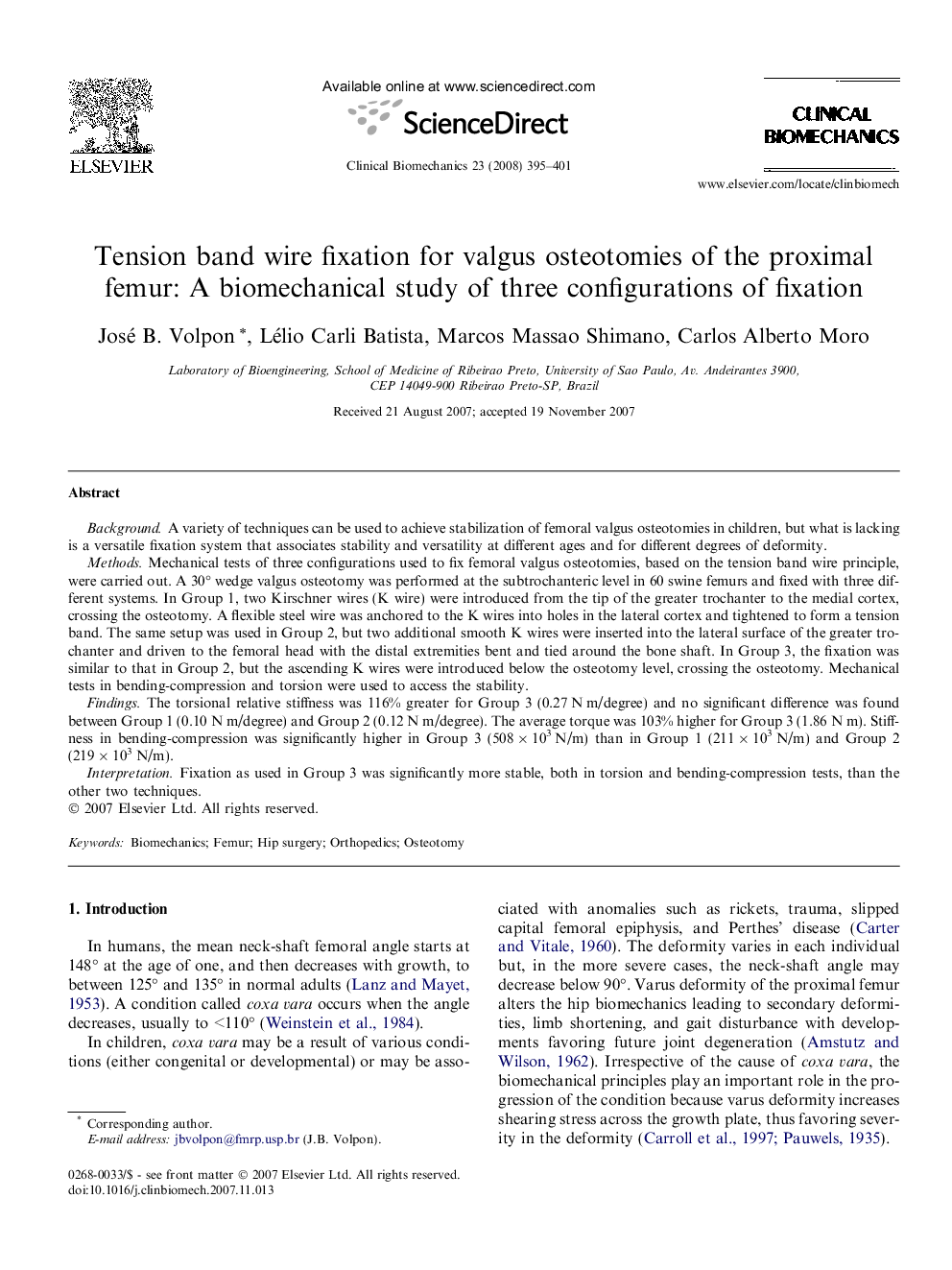| Article ID | Journal | Published Year | Pages | File Type |
|---|---|---|---|---|
| 4051416 | Clinical Biomechanics | 2008 | 7 Pages |
BackgroundA variety of techniques can be used to achieve stabilization of femoral valgus osteotomies in children, but what is lacking is a versatile fixation system that associates stability and versatility at different ages and for different degrees of deformity.MethodsMechanical tests of three configurations used to fix femoral valgus osteotomies, based on the tension band wire principle, were carried out. A 30° wedge valgus osteotomy was performed at the subtrochanteric level in 60 swine femurs and fixed with three different systems. In Group 1, two Kirschner wires (K wire) were introduced from the tip of the greater trochanter to the medial cortex, crossing the osteotomy. A flexible steel wire was anchored to the K wires into holes in the lateral cortex and tightened to form a tension band. The same setup was used in Group 2, but two additional smooth K wires were inserted into the lateral surface of the greater trochanter and driven to the femoral head with the distal extremities bent and tied around the bone shaft. In Group 3, the fixation was similar to that in Group 2, but the ascending K wires were introduced below the osteotomy level, crossing the osteotomy. Mechanical tests in bending-compression and torsion were used to access the stability.FindingsThe torsional relative stiffness was 116% greater for Group 3 (0.27 N m/degree) and no significant difference was found between Group 1 (0.10 N m/degree) and Group 2 (0.12 N m/degree). The average torque was 103% higher for Group 3 (1.86 N m). Stiffness in bending-compression was significantly higher in Group 3 (508 × 103 N/m) than in Group 1 (211 × 103 N/m) and Group 2 (219 × 103 N/m).InterpretationFixation as used in Group 3 was significantly more stable, both in torsion and bending-compression tests, than the other two techniques.
